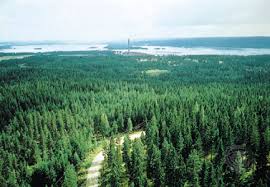
记忆方法
记忆“coniferous”这个单词,可以分解其组成:
1. “con-” 前缀,意味着“共同”或“一起”。
2. “ifer” 来自“ferre”,拉丁语动词,意为“携带”。
3. “-ous” 是形容词后缀,表示“充满...的”。
结合这些部分,记忆方法是:想象“coniferous”代表的是“一起携带”某种特征或特性的树木。这里,“一起”指的是树木共同拥有,而“携带”的特征是它们是针叶树(即松、杉、柏等)。所以,“coniferous”指的是“针叶的”或“针叶树的”。
1. “con-” 前缀,意味着“共同”或“一起”。
2. “ifer” 来自“ferre”,拉丁语动词,意为“携带”。
3. “-ous” 是形容词后缀,表示“充满...的”。
结合这些部分,记忆方法是:想象“coniferous”代表的是“一起携带”某种特征或特性的树木。这里,“一起”指的是树木共同拥有,而“携带”的特征是它们是针叶树(即松、杉、柏等)。所以,“coniferous”指的是“针叶的”或“针叶树的”。
以上内容由AI生成, 仅供参考和借鉴
英语词源
- coniferous
-
coniferous: see cone
- coniferous (adj.)
- 1660s, from conifer + -ous.
权威例句
- 1. Fusions were common between strains from deciduous hosts or coniferous hosts.
- 来自阔叶树或针叶树寄生的菌系间融合是普遍的.
- 2. In Belarus side, 88 % of the trees are coniferous and mixed forest.
- 在白俄罗斯一侧, 树木88%是针叶和针阔叶混交林.
- 3. Drag onto the page, then right - click to make coniferous or deciduous.
- 拖到绘图页上, 然后右击,使之成为针叶树或落叶树.
- 4. Most of the Siberian regional climate is temperate coniferous forests.
- 西伯利亚大部分地区属温带针叶林气候.
- 5. Boreal forests occupy the subarctic zone and are generally evergreen and coniferous.
- 北部森林占据亚北极区地带而通常是常绿和松树类.